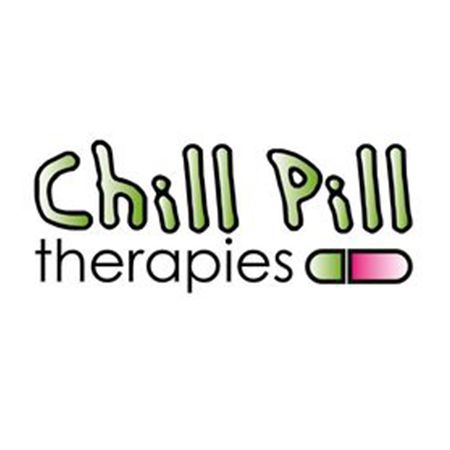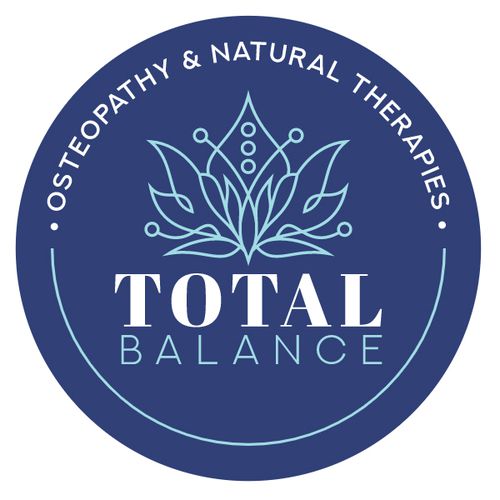
Bodywork is a unique and holistic approach to treating pain caused by an array of health conditions. It involves manipulation techniques for eliminating muscle tension, increasing range of motion and realigning the entire body so that it can move without pain. Many people train to become a massage therapist, but becoming a bodyworker takes time and maturation. This guide will walk you through the different techniques involved in bodywork as well as its benefits to the mind, body and emotions.
What's in a Name?
One could argue that the terms massage therapist and bodyworker are a matter of semantics, and the latter would certainly be able to clarify the difference for you. The term "massage therapist" has replaced the term "masseur". This is due in part to the negative reputation that the latter has gained as a result of being associated with sexual massage parlors. A massage therapist focuses on applying a wide range of manual therapy techniques on their clients to induce relaxation, loosen up connective tissue or repair damaged muscles among others. Bodywork therapists, on the other hand, go several steps further than a massage therapist goes.
What's the Difference Between Bodywork and Massage Therapy?
Massage therapy is just one form of bodywork that is used to address muscular issues. A remedial massage therapist, for instance, may apply soft tissue manipulation techniques to address myofascial pain syndromes, while deep tissue massage may be more suitable to people who suffer chronic pain due to an injury. There are many types of massage techniques to choose from, each with its own set of techniques and goals.
While a practitioner of bodywork also works on the deep muscles and can perform sports massage — or another massage technique for that matter — as well as a therapist who specialises in the field, they are more adept at performing several forms of bodywork. Structural bodywork works on the body by sections to correct its unnatural patterns that cause poor posture and pain during movement. The most common types of bodywork include the following:
- Rolfing fixes your posture by aligning the fascia, which is the connective tissue that supports and connects every organ and muscle in the body.
- Craniosacral therapy is a gentle manual technique that relieves symptoms of different physical, emotional and mental health conditions such as migraines, depression and dyslexia, to name a few. It works with the bones of the skull and the pelvis to activate the pulse running through the cerebrospinal fluids in the spinal cord.
- The Feldenkrais Method is a movement-based programme that increases body awareness through different exercises. This awareness enables the brain to adopt healthier body movements through the process of neuroplasticity.
- The Alexander Technique improves posture and movement by aligning the head, neck and trunk.
- Hellerwork combines manual therapy, body movement education and verbal dialogue to realign the body and eliminate physical, mental and emotional stress.
- Neuromuscular therapy involves soft tissue manipulation to improve the function of the nervous system function and the alignment of the skeletal system.
Here are some of the factors that will determine the difference between bodywork and massage. These are not laws set in stone, denoting where a massage therapist stops and a bodyworker starts. These are merely variables that come into play when you're faced with the dilemma of getting a bodywork therapy or massage therapy to address your condition.
Postural Analysis
A bodyworker will most likely put the client through a rigorous postural analysis. As the client walks in, the therapist will watch their gait. They will notice the balance in the hip and shoulder girdles. They will also take notice of the neck and head placement in relation to the spine. In addition, a thorough examination will probably be done with the client either using a plumb line or against a wall.
It is not to say that a massage therapist does not look at posture. A bodyworker has trained their eye to see catches, hitches, pulls and snags that have manifested in the client's body just by watching them.
What are the benefits of Bodywork?
Bodywork refers to various hands-on therapies and techniques that aim to improve the body's structure, function, and overall well-being. These therapies can include massage, chiropractic care, osteopathy, and many other methods. The benefits of bodywork can be both physical and mental, and they may vary depending on the specific therapy chosen. Some potential benefits include:
-
Pain relief: Many people turn to bodywork therapies to help alleviate pain resulting from injuries, stress, or chronic conditions. Techniques like deep tissue massage, myofascial release, and trigger point therapy can help release tension and reduce pain in the muscles and other soft tissues.
-
Improved flexibility and mobility: Bodywork can help improve joint flexibility, muscle elasticity, and overall range of motion. Techniques such as stretching, joint mobilization, and soft tissue manipulation can help increase flexibility and mobility, potentially reducing the risk of injury and improving overall performance.
-
Stress reduction: Bodywork therapies often promote relaxation and stress relief. Massage, for example, can help reduce cortisol (the stress hormone) levels while increasing the production of feel-good hormones like serotonin and dopamine. This can help improve mood and overall mental well-being.
-
Improved circulation: Techniques that involve applying pressure and manipulating the soft tissues can help increase blood flow and improve circulation. Better circulation can promote more efficient oxygen and nutrient delivery to muscles and other tissues, leading to faster recovery and improved overall health.
-
Enhanced immune system function: Regular bodywork can help boost the immune system by reducing stress, improving circulation, and stimulating the lymphatic system. Lymphatic drainage techniques can help remove waste products and toxins from the body, promoting better overall health and resilience.
-
Improved posture and body awareness: Bodywork can help correct imbalances and improve posture by releasing tight muscles, retraining the body to maintain proper alignment, and increasing awareness of body mechanics. This can lead to better overall function and reduced strain on muscles and joints.
-
Injury prevention and recovery: Regular bodywork can help identify and address potential sources of pain or injury before they become serious problems. By working on tight or imbalanced muscles, bodywork can help prevent injuries and also speed up the recovery process after an injury.
-
Emotional well-being: Some bodywork therapies, such as craniosacral therapy and somatic experiencing, focus on the connection between the body and emotions. These approaches can help release emotional tension stored in the body and promote emotional healing.
It's important to note that individual experiences and results may vary, and it's always a good idea to consult with a healthcare professional before beginning any new bodywork therapy.
How Much Does a Session Cost?
The cost of a bodywork therapy session in Australia can vary greatly depending on several factors, such as the type of therapy, the practitioner's experience and qualifications, the location, and the duration of the session. As my knowledge is up to date only until September 2021 and prices may have changed, it's essential to research current pricing in your area.
However, to give you a general idea, here are some approximate price ranges for various bodywork therapies in Australia:
-
Massage therapy: The cost of a massage session can range from AUD 60 to AUD 120 for a 60-minute session, with higher prices for longer sessions or more specialized techniques.
-
Chiropractic care: An initial consultation and treatment may cost between AUD 60 and AUD 150, with follow-up sessions ranging from AUD 40 to AUD 80.
-
Osteopathy: Initial consultations can range from AUD 80 to AUD 150, with follow-up sessions typically costing between AUD 60 and AUD 120.
-
Physiotherapy: An initial consultation can range between AUD 80 and AUD 150, while follow-up sessions may cost between AUD 60 and AUD 100.
-
Other bodywork therapies, such as craniosacral therapy, myofascial release, or somatic experiencing, can have similar price ranges, but it's essential to research these specific therapies in your area to get accurate pricing.
Keep in mind that these are approximate costs, and it's crucial to check with individual practitioners for their specific rates. Additionally, some private health insurance plans may cover part or all of the cost of bodywork therapies, so it's worth checking your insurance coverage before booking a session.
Kinesiology
When the bodyworker spots the issues, they will begin to piece together what may be causing the problems. They will use their collected understanding of kinesthetic movement to see the client from all layers of their bodily design. They understand that headaches can come from tightness in the ankles, and will try to deconstruct the problem from every angle. They have the ability to see the interconnectedness at work in their clients.
Combined Applications
Many bodyworkers do very little actual massage. They will use methods that a physiotherapist would incorporate, like working resistance movements and tracking the joints. They may also include breathwork, visualization and emotional release techniques. They will often administer energy work in the form of Reiki, Theta Healing, acupressure, reflexology and other various methods. When a bodyworker does apply massage, it is very specific to an area or location. They may put an elbow deep into stagnant muscles or connective tissues. They may work on readjusting bones with manipulation somewhat like a chiropractor. They may also choose to give soft adjustments like craniosacral or Bowen techniques.
What's involved in becoming a bodyworker?
The training required to become a bodyworker depends on the specific type of therapy or technique you wish to practice. Each discipline often has its own unique educational requirements, certifications, and professional organizations. However, there are some general steps and guidelines that can help you on your path to becoming a bodyworker:
-
Choose a specialization: First, decide which type of bodywork therapy you are most interested in practicing. Some popular examples include massage therapy, chiropractic, osteopathy, physiotherapy, and other specialized techniques like craniosacral therapy, Rolfing, or myofascial release. Research the various disciplines to determine which one best aligns with your interests and goals.
-
Education and training: Once you have chosen a specialization, research the educational requirements and training programs available for that specific discipline. For example, massage therapists typically need to complete a formal training program at a massage school, which can range from several months to two years. Chiropractors, osteopaths, and physiotherapists, on the other hand, require more extensive education, often involving a bachelor's degree followed by a professional degree in their respective fields.
-
Certification and licensure: Depending on the type of bodywork and the location where you plan to practice, you may need to obtain certification and/or licensure. This typically involves completing an approved educational program and passing a standardized exam. Be sure to research the specific requirements for your chosen discipline and location, as they can vary widely.
-
Continuing education and professional development: Many bodywork professions require ongoing continuing education to maintain certification or licensure. This helps ensure that practitioners stay up-to-date with the latest research, techniques, and best practices in their field. In addition, joining a professional organization can provide networking opportunities, access to resources, and support for your career.
-
Gain experience: After completing your education and obtaining any necessary certifications or licenses, it's essential to gain hands-on experience. This can involve working in a clinic, spa, or other healthcare setting under the guidance of experienced professionals. As you gain experience, you can develop your skills and build your reputation as a bodyworker.
-
Establish your practice: Once you have the necessary education, certifications, and experience, you can consider starting your own practice or joining an existing one. This might involve finding a suitable location, marketing your services, and building a client base.
Remember that the specific requirements for becoming a bodyworker can vary depending on the discipline and location. It's important to research the regulations and standards in your area to ensure that you meet all the necessary requirements for your chosen profession.
History of Bodywork
-
Ancient civilizations: The earliest records of bodywork practices can be traced back to ancient civilizations such as Egypt, China, and India. In ancient Egypt, for example, tomb paintings depict people receiving massages as early as 2500 BCE. Similarly, traditional Chinese medicine, which includes practices like acupuncture and acupressure, has been practiced for thousands of years. In India, the traditional healing system called Ayurveda incorporates various bodywork techniques, including massage, and dates back over 3,000 years.
-
Greek and Roman traditions: In ancient Greece, bodywork was closely linked to athletics and physical fitness. The famous physician Hippocrates, often referred to as the "Father of Medicine," advocated for the use of massage and other bodywork techniques as part of a holistic approach to healthcare. The Romans also embraced bodywork, incorporating massage and other techniques into their public bathhouses and healthcare practices.
-
European development: During the Middle Ages, bodywork practices were often linked to monastic healthcare and were influenced by the prevailing religious beliefs of the time. The Renaissance saw a revival of interest in human anatomy and the sciences, which led to a greater understanding of the human body and the development of new bodywork techniques. In the 19th century, Swedish physician Per Henrik Ling developed the Swedish Movement System, which laid the foundation for modern Swedish massage and influenced many other forms of Western bodywork.
-
Eastern influences: In the late 19th and early 20th centuries, Western practitioners began to explore and adopt various Eastern bodywork techniques, such as Shiatsu from Japan and Thai massage from Thailand. These techniques often focused on the body's energy systems and the concept of balance, which greatly influenced the development of modern bodywork therapies.
-
Modern bodywork: The 20th century saw a surge in the development and popularization of various bodywork techniques. For example, in the 1930s, American osteopath William Sutherland developed craniosacral therapy, while Ida Rolf developed Rolfing (a form of structural integration) in the 1950s. In more recent years, the field of bodywork has continued to expand, with the emergence of techniques such as myofascial release, trigger point therapy, and many others.
Today, bodywork is a diverse field that encompasses a wide range of therapeutic techniques and approaches, drawing from both ancient and modern traditions. As our understanding of the human body and mind continues to evolve, it's likely that the field of bodywork will continue to grow and adapt in response to new discoveries and cultural influences.
Frequency
Your bodyworker will most likely ask you to schedule another session soon. They like to have two or three shots at the issues in a short span of time. They want to give their work a chance to set in without waiting so long that the issues will revert to their unbalanced ways again. After a few immediate sessions, the bodyworker will tell you that you are to come back occasionally, and should give you some exercises or practices to implement into your daily life to keep you on the healing path.
If you want to try a bodyworker, then ask for their credentials. See how long they have been in the field and ask them for an analysis of your body's physical structure and movements before getting on the massage table. A confident bodyworker will be able to give you a 5-minute overview of your case without blinking an eye.
Feel free to go over the full listing of Australia's highly skilled bodyworkers on the Natural Therapy Pages to find one in your local area.
Originally published on Nov 04, 2011








